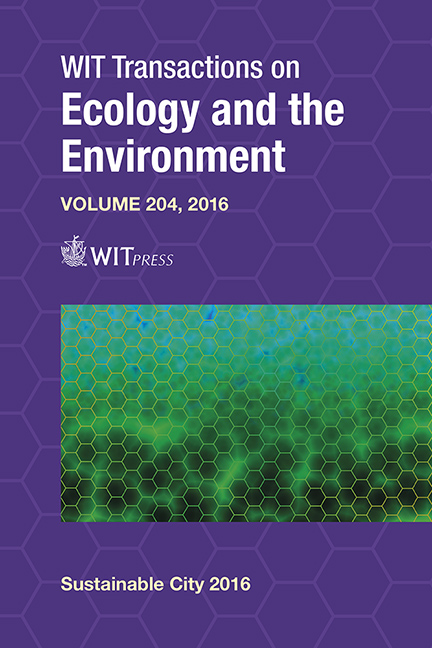Designing Resilient Regions By Applying Blue-Green Infrastructure Concepts
Price
Free (open access)
Transaction
Volume
204
Pages
13
Page Range
493 - 505
Published
2016
Paper DOI
10.2495/SC160421
Copyright
WIT Press
Author(s)
Z. Ghofrani, V. Sposito, R. Faggian
Abstract
In Australia, weather extremes (droughts and floods) are an accepted component of coupled human-environment systems. Australia is the driest inhabited continent on earth and also has the greatest annual rainfall and run-off variability. Competition for water between the environment, agriculture and domestic uses is intense and the cause of much public debate. It is not unusual for parts of Australia to transition quickly from a state of extreme water scarcity to one of severe flooding. In fact, floods cause more damage in Australia than any other natural disaster. Climate change will exacerbate the situation through increased frequency and intensity of heavy rainfall events and also more intense and longer-lasting droughts. The combination of drought followed by intense rainfall increases the risk of severe flooding, with impacts on civil infrastructure (road and bridge washouts, damage to houses), and impacts on agriculture (soil erosion and destruction of crops and livestock).
Structural flood mitigation activities in Australia, such as the construction of levees, was initially driven by private landholders. These measures were often not well planned or integrated at larger scales and therefore have been viewed with some suspicion. More recently, non-structural (land planning, emergency management) approaches have become the key flood mitigation measure. In contrast, The Netherlands takes a structural approach through concepts like Blue-Green Infrastructure (BGI), with the aim of “giving the flood a pathway”. In this context, structural interventions in the landscape provide alternative pathways for flood water, slowing the waters progress such that flood damage is mitigated. Our research focuses on the feasibility of implementing BGI in Australia, considering the costs and benefits in terms of the biophysical environment, infrastructure and socio-economic systems, in order to increase the resilience of rural and regional communities. The research will inform strategic and statutory planning at the regional level.
Keywords
sustainable region, climate change adaptation, Blue-Green Infrastructure, disaster management





